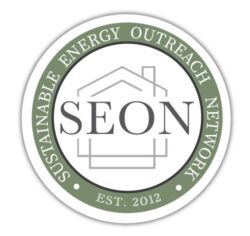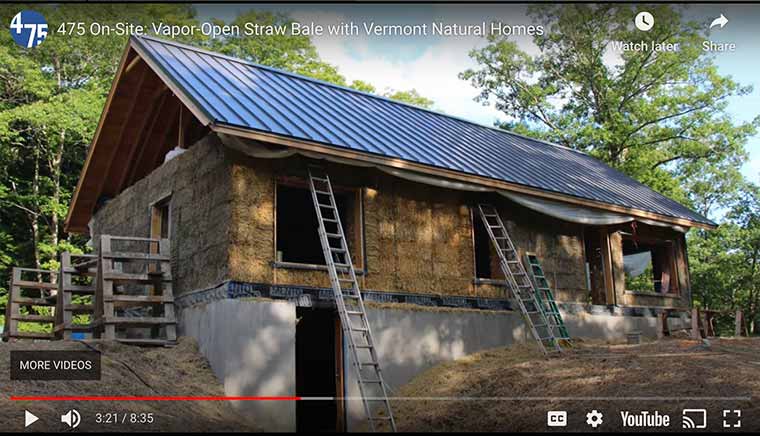Vermont is renowned for its charming older homes, barns, and churches that encapsulate the quintessential Vermont dream. Building the Vermont Dream means embracing sustainable practices today, reminiscent of those older homes that reflect the wisdom of our great-great grandparents. Our ancestors were deeply committed to sustainable building, utilizing natural materials, incorporating passive solar design, and employing other techniques to create energy-efficient and environmentally friendly homes. However, over time, we deviated from these practices in pursuit of convenience and cost-effectiveness. To restore Vermont’s legacy of sustainable building and create a future that honors our past, we must understand why we strayed and take action. By educating ourselves and promoting sustainable building, we can revive our connection to heritage, reinstate sustainable practices, and forge a path towards a greener future for Vermont.
So, why did our Vermont ancestors build sustainably?
- Respect for the environment: Our ancestors had a deep respect for the environment. They understood the importance of living in harmony with nature. They prioritized natural materials like wood, stone, and clay.
- Local availability: Back then, using local materials made practical sense. Vermont has abundant natural resources, including forests and stone quarries. Our ancestors made use of what was readily available in their surroundings, minimizing the need for long-distance transportation and reducing the associated environmental impact.
- Adaptation to the climate: Vermont’s climate is characterized by cold winters and warm summers. Our ancestors designed their homes to optimize passive solar heating and cooling. By utilizing natural sunlight and airflow, they maximized comfort while minimizing the need for energy-intensive heating and cooling systems.
- Prioritized Moisture Management: They used materials that were naturally resistant to moisture, such as stone, brick, and wood. They also built their homes with features that helped to prevent moisture from entering the home, such as overhangs, gutters, and downspouts. But then a new trend emerged, where we began to use cheaper materials, such as vinyl siding and drywall.
So, how did we get off track?
Over time, as technology advanced and society evolved, there was a shift away from sustainable building practices.
In the 20th century, we began to build homes in a less sustainable way for many reasons, including:
- A lack of skilled labor: There is a lack of skilled labor in the construction industry. This is due to the retirement of many experienced builders and the lack of training programs for new builders.
- The rise of the suburbs. In the post-war era, many Americans moved to the suburbs, where they built large, energy-inefficient homes.
- The decline of manufacturing. The loss of jobs made it difficult for Vermonters to afford to build sustainable homes.
- Introduction cheaper, misunderstood materials. Vinyl siding, drywall, particle board, fiberglass insulation, MDF (wood made from wood fibers and resin) and VOCs (volatile organic compounds – chemicals that easily evaporate into the air and are found in a variety of products, including paints, solvents, cleaning products, etc. They are harmful to human health, causing cancer, damage to the liver, kidneys and central nervous system, respiratory problems, headaches, nausea and more. The introduction of VOCs was driven by cost and durability considerations, but their impact on our health and the environment has been significant. Our ancestors simply did not use these.
- The rise of consumerism. The rise of consumerism led to a demand for new and bigger homes. This led to an increase in the construction of unsustainable homes.
- Industrialization: The Industrial Revolution led to a shift from handmade to mass-produced goods, including building materials. This led to the use of less sustainable materials, such as concrete and steel, which are energy-intensive to produce and require large amounts of natural resources.
- Government policies: Government policies, such as tax breaks for homeownership and mortgage subsidies, made it easier for people to buy homes, but they also encouraged the construction of larger and more expensive homes.
- Changes in the construction industry: The construction industry has changed significantly in the past century. The use of prefabricated materials and on-site construction has become more common, which has led to a reduction in the use of traditional building methods, such as cob and adobe.
- Changes in the way we live: Our lifestyles have changed significantly in the past century. We are now more mobile than ever before, and we often live in different places throughout our lives. This has led to a decrease in the demand for custom-built homes, which are often more sustainable than mass-produced homes.
- Misconception about costs: Sustainable building can be more expensive than traditional building methods. This is due to the use of more expensive materials, such as recycled materials and energy-efficient appliances. However, the savings in rebates, taxes, bills and more becomes a life-long cost cutting benefit.
- Lack of awareness: There is a lack of awareness about the benefits of sustainable building. Many people are not aware of the cost savings, resale value, tax incentive, health and environmental benefits and so much more of sustainable building.
Why does it matter to build sustainably the way our ancestors did?
Whether in a new home or through a remodel, to build sustainable high-performance houses is not just a matter of preserving the environment; it has profound implications for our well-being, economy, and future:
- Energy Efficiency: Sustainable high-performance houses in Vermont significantly reduce energy consumption, leading to lower utility bills and long-term cost savings for homeowners.
- Environmental Responsibility: Building sustainably helps minimize environmental impact by reducing carbon emissions, resource depletion, and waste generation, thus preserving Vermont’s natural beauty and ecological balance.
- Climate Resilience: Sustainable homes are designed to withstand and adapt to Vermont’s varying climate conditions, ensuring occupant comfort and safety during extreme weather events.
- Healthier Indoor Environment: Sustainable houses prioritize superior indoor air quality through effective ventilation systems and the use of low-toxicity materials, promoting a healthier living environment for occupants.
- Water Conservation: Sustainable houses incorporate efficient water management systems, such as rainwater harvesting and low-flow fixtures, reducing water consumption and preserving local water resources.
- Resale Value: Sustainable high-performance houses often have higher resale values due to their energy-efficient features, eco-friendly designs, and growing demand for sustainable homes.
- Long-term Cost Savings: The energy efficiency and reduced maintenance requirements of sustainable houses translate into long-term cost savings for homeowners, making them financially beneficial choices.
- Sustainable Lifestyle: Building sustainably aligns with a sustainable lifestyle, allowing residents to actively contribute to environmental preservation and be part of a greener community.
- Personal Health and Well-being: Living in a sustainable high-performance home can improve occupants’ physical and mental well-being through better air quality, thermal comfort, and a connection to nature.
- Future-proofing: By building sustainable homes, residents future-proof their investments, as sustainable practices and energy-efficient designs become increasingly important in building codes, regulations, and market demand.
So, how do we get back on track?
Reconnecting with our sustainable building heritage requires collective action and a commitment to change:
- Understand financial incentives and tax relief of building a sustainable, high-performance home: The average sustainable home in Vermont can save homeowners up to $10,000 in taxes compared to a regular build. This is because sustainable homes qualify for a number of tax breaks, including the Vermont Property Tax Credit, which is a tax credit of up to $4,000 for homeowners who build or renovate a sustainable home. The average homeowner can save $1,800 per year on their energy bills by making energy-efficient improvements to their home (over the course of a 30-year mortgage, this can save the homeowner $54,000). The Vermont Energy Efficiency Rebate is a rebate of up to $5,000 for homeowners who make energy-efficient improvements to their homes. The federal government offers a tax credit of up to 30% of the cost of energy-efficient improvements to homes.
- Hiring a certified high-performance expert: Hiring a certified high-performance builder in Vermont can help you build a home that is energy-efficient, environmentally friendly, comfortable, and has a high resale value. These builders are experts in energy-efficient building practices and use recycled and sustainable materials. They also incorporate energy-efficient and water-saving features into their designs. This can save you money on your utility bills and taxes, reduce your environmental impact, and improve your overall health and well-being.
- Education and awareness: By raising awareness about the benefits of sustainable building and sharing knowledge about traditional practices, we can inspire individuals, communities, and policymakers to prioritize sustainable construction methods.
- Building codes and regulations: Implementing and enforcing building codes and regulations that encourage or require sustainable practices can play a crucial role in driving the adoption of sustainable building methods. This ensures that sustainable building becomes the norm rather than the exception.
- Collaboration and innovation: Engaging architects, builders, engineers, and designers to collaborate on sustainable building projects can foster creativity and innovation in the industry. By sharing best practices and exploring new technologies, we can push the boundaries of sustainable design and construction.
- Demand better government support and oversight: Government can play a role in promoting sustainable building by providing incentives, such as tax breaks and rebates, for homeowners who make energy-efficient upgrades to their homes. Government can also adopt building codes and regulations that require new homes to be built to a higher standard of energy efficiency.
- Demand better industry innovation and oversight: The building industry can also play a role in promoting sustainable building by developing new products and services that make it easier and more affordable for homeowners to build and renovate their homes in a sustainable way.
As noted above, sustainable building can be more expensive than traditional building methods. However, the long-term cost savings can be significant, and the environmental benefits are priceless. Also, sustainable building does not have to be complicated. There are many simple things that can be done to make a home more sustainable, such as using energy-efficient appliances, installing the correct insulation, prioritizing moisture management, and even planting trees.
The trend towards sustainable building will continue to grow in the years to come because Vermonters know they need to do everything we can to protect our planet for future generations, and sustainable building is one of the most important things we can do.
By embracing sustainable building practices rooted in our heritage, we can restore balance with nature, create healthier living spaces, and safeguard the future for generations to come. It’s time to reconnect with the wisdom of our great-great grandparents and build a sustainable legacy for Vermont and beyond.

